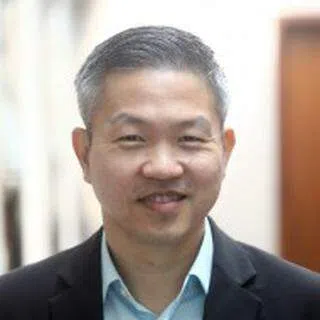Digital transformation the Chinese way
Implementing digital transformation initiatives in Chinese tech companies where the retirement age was a mere 40 years old, and extensions were granted as exceptions to good performers, Singaporean Kwek So Cheer learnt more about the Chinese psyche than he did any other practical knowledge.

When I was assigned to lead the digital transformation initiatives of a Fortune 500 high-tech client based in Shenzhen from 2012 to 2017, I had no idea that the experience would transform me as well. The client organisation was already very successful, having grown into a multibillion enterprise in 20 years. But they recognised that they had to constantly challenge the status quo in order to survive in a world driven by technology disruptions where start-ups could achieve unicorn status in just a few short years. They were aware that it was extremely risky to execute high-stakes digital transformations and thus engaged experienced practitioners and consultants to ensure success.
The Chinese senior executives in charge knew that the outcomes of these initiatives could make or break their careers. This was especially so in the organisation where the retirement age was a mere 40 years old at that time and extensions were only granted as exceptions to good performers.
Thus, it was important for me to build trust and friendships with the senior leadership to understand their internal challenges and frustrations. It was through some of the late-night dinners and Chinese liquor(白酒)drinking that I learnt the terms 酒品看人品 (you see a person's character through his drinking, jiupin kan renpin) and 感情深一口闷(finish the drink in one gulp if the feelings are true and deep, ganqingshen yikoumen). I can still recall the ride back after the first of these sessions where all our "deep feelings" were thrown up outside the taxi window as the driver rushed along the highway back to my apartment.
Why change when nothing seems broken?
Having successfully implemented many transformation initiatives, I can assure everyone that no two initiatives are the same. To overcome the challenges and difficulties in a foreign land adds another layer of complexity.
One of the key challenges we faced in that particular project was how to obtain buy-in from the thousands of rank and file to embrace the new and transformed processes and systems. Everyone had their day jobs and tasks that were filled to the brim. They had experienced successes, high growth rates, and big bonuses thus far, so why change when nothing seems broken?
To overcome these challenges, I worked with the senior executives to adjust the incentives to tie in with the transformation outcomes; embarked on campaigns to explain the rationale, details and benefits of the change; and even devised tests to assess how much each individual understood and embraced what we were doing.

Never underestimate the competitive spirit of the Chinese
It was through those tests that I had an epiphany on the execution of digital transformations in China. It is in the Chinese DNA to take tests and examinations very seriously. Imperial examinations which trace their origins from the earliest dynasties have impressed upon generations the importance of doing well in these life-changing assessments. That the results of these tests were publicly published, I believe, must have also contributed to the level of seriousness that the Chinese put into them as their "face" was at stake. In the client organisation, they even published their annual appraisal scores of the employees, ranking them A to D.
The competitive nature of the Chinese could also be harnessed. During the User Acceptance Test (UAT) of the first transformation project I was leading, we had charts that tracked the progress of the execution daily with planned versus actual lines plotted on the x- and y- axis. After about four days, it was clear that we would be severely behind time as the two lines were diverging by the day. At that point, I devised a plan to split the UAT teams into two with different set of test scripts to execute. Daily reports on the progress of each team were circulated via emails to everyone including the bosses. We immediately saw the lines starting to converge and yes, we eventually finished the UAT ahead of time.

The competitive spirit of the Chinese can never be underestimated. There were many occasions where I facilitated intense workshops with the Chinese clients on competitive analysis. No stones were left unturned and every publicly available metric was analysed and compared. It was 知己知彼百战百胜 (knowing yourself and your enemy wins every of the hundred battles, zhiji zhibi baizhan baisheng) brought to life. Debates and discussions were focused on how to beat the competition. There were also fights between departments when interests were threatened, or when other veiled attacks were sensed. Risks of further falling behind the competition were also delved into and mitigating actions tabled for follow-ups. Being a facilitator in these sessions opened my eyes and too many times I had to think on my feet to lighten the tension and let individuals 下台阶 (xia taijie), another term I learnt which means to save face from an awkward situation.
Building Relationships the Chinese way
Despite the tensions and frictions of these sessions, a dinner with drinks (you guessed it, more 白酒) would inevitably follow. There would be a protocol where individuals from different departments would walk up to the leader of a peer department for a toast as a sign of respect, typically with a string of flattering words ending with the phrase 我干了您随意(I will empty the glass but you don't have to, woganle ninsuiyi). A team member of that leader would then rush to block the leader's attempt to reciprocate and instead drink on his behalf. This 挡酒 (block drink, dangjiu) practice was also meant to get into the good books of the leader. These sessions would all end well into the night with many lying down in stupor either on their chairs or in some corner of the room. Somehow, I marvelled at their recovery rates as without fail, the morning after, I would still see all of them hard at work at their desks before the clock-in time.
As I write these lines, I can't help but remember why I still have the passion for digital transformation works. It is not about the new technologies or the deep thinking required to introduce and execute transformational changes. It is about the relationships and friendships that are formed as a result of the journeys that are fraught with risks and issues, which can only be overcome with like-minded comrades. We encourage each other and believe in the phrase 办法总比问题多(banfa zongbi wenti duo), or there will always be more solutions than problems. These experiences truly transformed me.



![[Photos] Fact versus fiction: The portrayal of WWII anti-Japanese martyrs in Taiwan](https://cassette.sphdigital.com.sg/image/thinkchina/3494f8bd481870f7c65b881fd21a3fd733f573f23232376e39c532a2c7593cbc)

